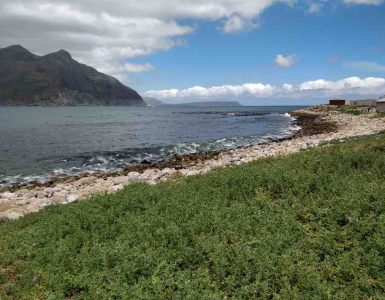India is home to more than half a dozen Natural UNESCO World Heritage Sites like Western Ghats, Kaziranga National Park, Nanda Devi National Park, Valley of Flowers National Park, etc.
One of the largest sites on the list is the Sundarbans Mangrove Forests, located at the confluence of the Ganges, Brahmaputra, and Meghna rivers in the Bay of Bengal.
Sundarban mangrove Forests are the largest mangrove forests in India and one of the most extensive in the world.
The forest spans India and Bangladesh and is recognized globally for its biodiversity, ecological significance, and the critical role it plays in protecting the coastal areas from natural disasters.
The Sundarbans are characterized by tidal waterways, mudflats, and small islands. The region is known for its dense network of rivers, streams, and estuaries, making it a crucial habitat for various species of flora and fauna.

The region is most famous for being home to the elusive and endangered Royal Bengal Tiger (Panthera tigris tigris). It is estimated that over 100 tigers live in the Indian portion of the forest.
The Sundarbans region is a critical stopover for migratory birds and is home to species like the Bengal florican, spot-billed pelican, and kingfishers. The saltwater crocodile (Crocodylus porosus) is another iconic species that thrives in the mangrove swamps of the Sundarbans.
Apart from Sundarbans in West Bengal, there are a few other mangroves in India that are primarily found in the coastal states of Odisha, Andhra Pradesh, Tamil Nadu, Kerala, Gujarat, Maharashtra, and Andaman and Nicobar Islands.
The Pichavaram Mangrove Forest situated along the southeastern coast of India in Tamil Nadu is one of the largest and most well-preserved mangrove ecosystems in India. The region has tall and short mangrove trees, which thrive in the brackish water formed by the mixing of fresh water from rivers and saline water from the Bay of Bengal.
The Gulf of Kutch Mangroves located on the eastern coast of India overlooking the Arabian Sea stabilize the coastline and reduces the impact of storms and cyclones, which are frequent in this region.
Mangroves in India are vital coastal ecosystems that provide numerous ecological, economic, and social benefits. They play a key role in protecting coastal areas, supporting biodiversity, and contributing to the livelihoods of local communities.
The collection of Sundarbans honey is a traditional activity that has been practised for centuries and is a source of employment for thousands of locals. Areas like the Sundarbans and Pichavaram also attract tourists and researchers due to their rich biodiversity and unique landscapes, fostering ecotourism.
India’s total mangrove cover is 4,991.68 sq km, making up 0.15% of the country’s total geographical area as per India State of Forest Report 2023.
Because of Sundarbans, West Bengal has the highest mangrove coverage, accounting for 42.45%, followed by Gujarat at 23.66% and the Andaman & Nicobar Islands at 12.39%.
Threats to the Mangroves
Rising sea levels and increasing temperatures threaten the delicate balance of the mangroves in India, causing saltwater intrusion and disrupting the habitats of species reliant on freshwater.
The human-caused factors like rapid coastal development and infrastructure projects, such as ports, resorts, and housing, often lead to the destruction of mangrove habitats. Further, industrial effluents, sewage, and plastic waste are significant sources of pollution in coastal areas, affecting mangrove health.
Additionally, the expansion of shrimp farming, particularly in the coastal areas of Andhra Pradesh and Tamil Nadu, has led to the destruction of large tracts of mangrove forests.
In Sundarbans, illegal activities such as poaching of tigers, hunting of crocodiles, and unsustainable honey collection are major concerns. The construction of the shipping lanes, power plants and Mundra Port along the Gulf of Kutch Mangroves’ has led to habitat loss and pollution.
MISHTI Scheme to Protect Mangroves in India
Announced in the budget 2023, on 5th June 2024, the Indian government launched the ‘Mangrove Initiative for Shoreline Habitats & Tangible Incomes (MISHTI)’ to restore and promote mangroves as a unique, natural ecosystem and to preserve and enhance the sustainability of the coastal habitats.
This five-year initiative (2023-2028) seeks to restore and promote mangroves along India’s coastline, enhancing coastal habitats’ sustainability.
The objective of the MISHTI is to ‘restore mangrove forests’ by undertaking mangrove reforestation and afforestation measures along the coast of India.
Financial support of Rs.100 crore has been allocated through the Compensatory Afforestation Fund Management and Planning Authority (CAMPA) as the initial project outlay for the scheme.
Approximately, 22561 hectares of degraded mangrove area has been brought under restoration in 13 States and Union Territories (U.T.) and a total of Rs.17.96 crore has been released for the restoration of 3836 hectares to states like Andhra Pradesh, Gujarat, Kerala, Odisha, West Bengal, and the U.T. of Puducherry.
Wrapping Up
Mangroves are critical to India’s coastal ecosystem and the livelihoods of millions who live near or depend on coastal resources. The loss of these mangroves could jeopardize the region’s and country’s ecological stability.
Let us hope the MISHTI Scheme can put concerted efforts into the conservation and sustainable management of mangroves in India.






Add comment